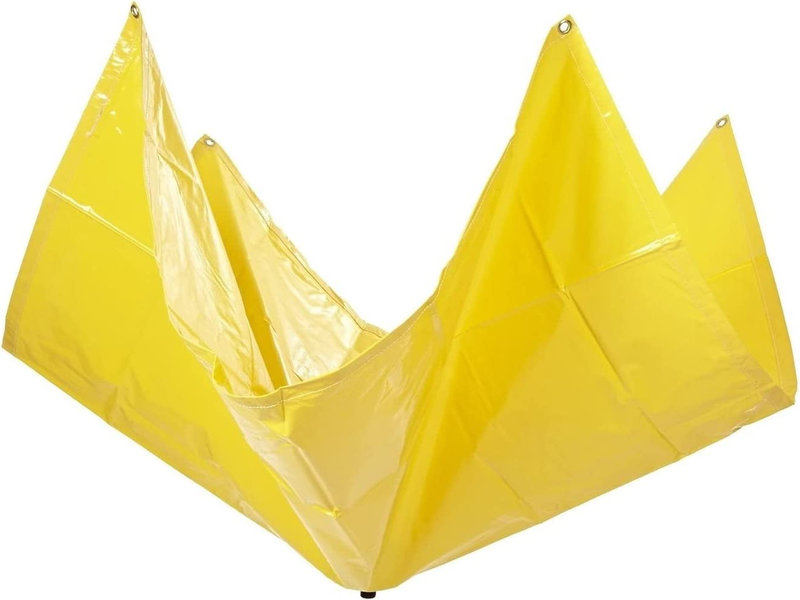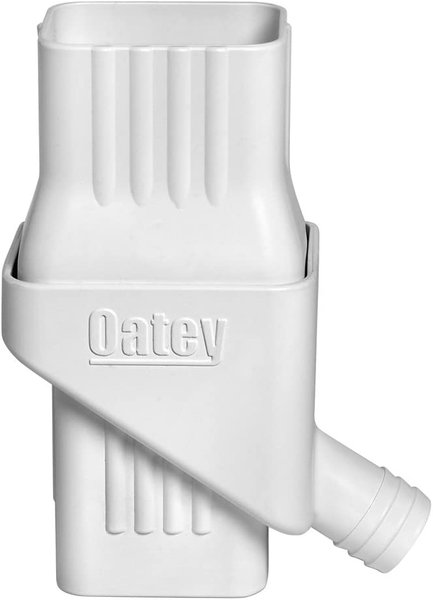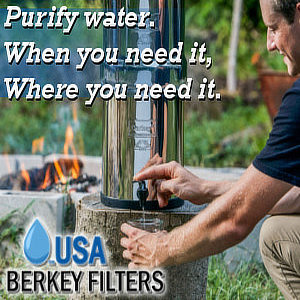Gallons Of Rainwater Collection From A Tarp (How-to Calculate)
Rainwater collection. How many of you do this? When it rains, there’s a stunning amount of water that falls from the sky! Rainwater collection adds up very quickly for every square foot that you’re able to capture from water runoff.
To put it into perspective, I’m going to use an ordinary tarp (various sizes /dimensions) to give you an idea how much rainwater that you could potentially collect with that tarp.
Note: A great prep item is an ordinary tarp (lots of uses!). Even a small 5×7 foot tarp can collect a lot of rainwater!
For example, by using a few lengths of cordage, tie up the tarp corners to some tree branches (or use support poles -sticks), slope the tarp downwards, and form a ‘V’ such that any rainwater will channel to a runoff point (into a container).
Even just 1/10″ of accumulated rain will produce rainwater collection of nearly 2 gallons with that small tarp!
Rainwater Collection Tarp
Update: Since the original publish date, I’ve noticed a product (tarp) specifically designed to collect rainwater. It’s available in various sizes. The corners are tied up, and the center has a standard garden hose connection to hook up your hose – routing the water wherever you wish. Clever…
Heavy Duty Drain Tarp
(view on amzn)

How much rainwater can you collect? I’ve calculated several examples of tarp dimensions to give you an idea – as well as various amounts of total rain. The formula is written below (plug in to your own spreadsheet).
Gallons Of Rainwater Collection From 1/10″ Rain
(2 gallons) 5×7 Tarp
(3 gallons) 6×8 Tarp
(7 gallons) 9×12 Tarp
(9 gallons) 10×14 Tarp
(12 gallons) 12×16 Tarp
(17gallons ) 14×20 Tarp
Gallons Of Rainwater Collection From 1/4″ Rain
(5 gallons) 5×7 Tarp
(7 gallons) 6×8 Tarp
(17 gallons) 9×12 Tarp
(22 gallons) 10×14 Tarp
(30 gallons) 12×16 Tarp
(44 gallons) 14×20 Tarp
Gallons Of Rainwater Collection From 1″ Rain
(22 gallons) 5×7 Tarp
(30 gallons) 6×8 Tarp
(67 gallons) 9×12 Tarp
(87 gallons) 10×14 Tarp
(120 gallons) 12×16 Tarp
(175 gallons) 14×20 Tarp
How Much Rainwater Collection From A Roof
Rainwater Collection Systems
(view on amzn)
Let’s say you set up a rainwater collection system for the roof of your house (adapting to the gutters), and let’s say that the roof footprint is 28×40 feet. A 1 inch rain event will yield an incredible 700 gallons of water from that footprint! (just plug in your roof footprint dimensions to the formula below).
Downspout Diverter
(amzn)

The point being that it doesn’t take much to be able to collect LOTS of rainwater. By keeping in mind that an ordinary tarp can be used for rainwater collection. And, a downspout diverter from your roof gutter can be used for LOTS of rainwater collection from your roof. It could be designed to collect into a barrel (with an overflow runoff, and a hose spigot mounted near the bottom for using the collected water), or any sort of collection container (they make some big ones). Maybe use to water your garden too…
How to Calculate Gallons of Rainwater Collection
TECHNICAL CALCULATIONS
14.44 cubic inches in a cup
1728 cubic inches in a cubic foot (12 x 12 x 12)
119.7 cups per cubic foot (1728 / 14.44)
7.5 gallons per cubic foot (119.7 / 16)
Example: 1/10″ of rain on a 10 by 10 foot surface
CONVERT SQUARE FOOTAGE: 10 x 10 = 100 square feet
CONVERT INCHES TO FEET OF RAIN: (1/10) / 12 = 0.0083 feet
CALCULATE CUBIC FEET OF WATER: 100 x 0.0083 = 0.83 cubic feet
CONVERT TO GALLONS: 0.83 x 7.5 = 6.2 gallons
Generic rainwater harvesting formula is as follows:
(plug the formula into your spreadsheet of choice…)
((X*Y)*(R/12))*7.5
X*Y = tarp size (or any dimension, such as your roof)
R = inches of rain
I suggest that you filter that accumulated rainwater before drinking it. As you know, I highly suggest the Berkey countertop water filter systems. I use it for all of my drinking water needs.
About The Berkey Guy – Authorized Dealer

Illegal To Capture Rainwater?
I originally published this during 2018. I don’t know the extent at which they may have changed since then. If anything, I suspect that it has probably gotten worse…
Amazingly, apparently in some areas (states) it is illegal (or restricted) to do rainwater collection. Water has become ‘big business’ and along with it comes regulations. Yep, water from the sky may belong to the government in your location…
I believe there are rainwater harvesting issues in the following states:
Arizona | Arkansas | California | Colorado | Hawaii | Illinois | Nevada | New Jersey | North Carolina | Ohio | Oklahoma | Oregon | Rhode Island | Texas | Utah | Virginia | Washington |
[ Read: How Will You Get Water From Source To Home After SHTF ]

